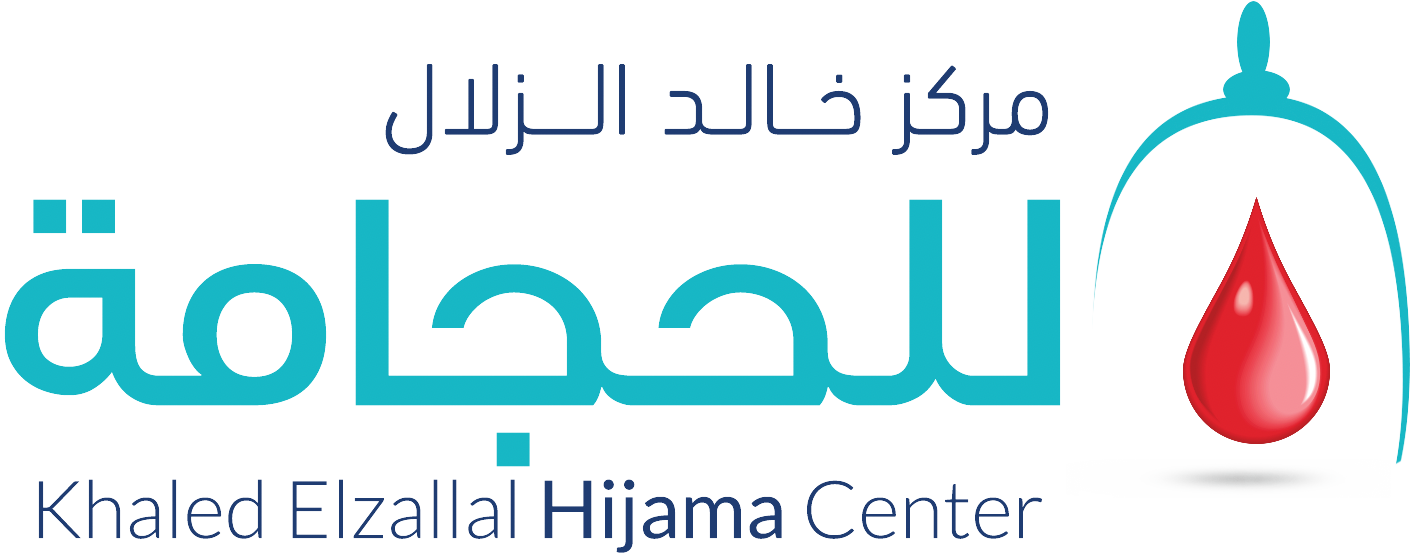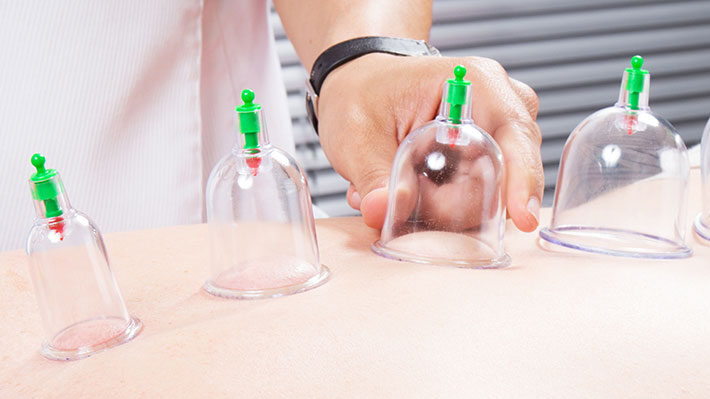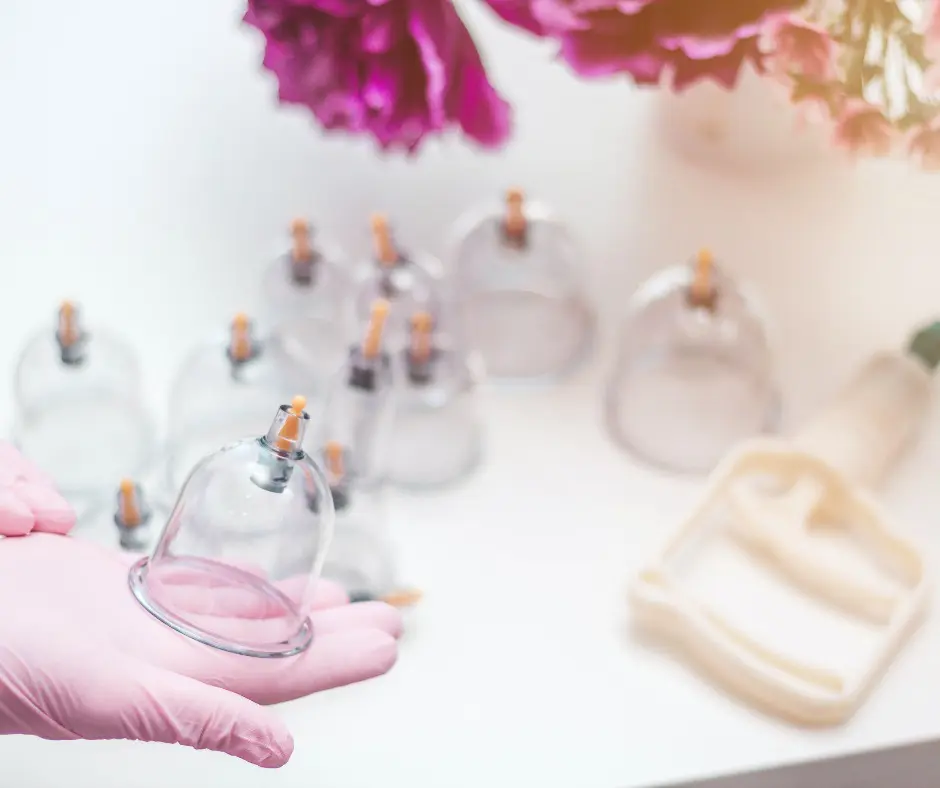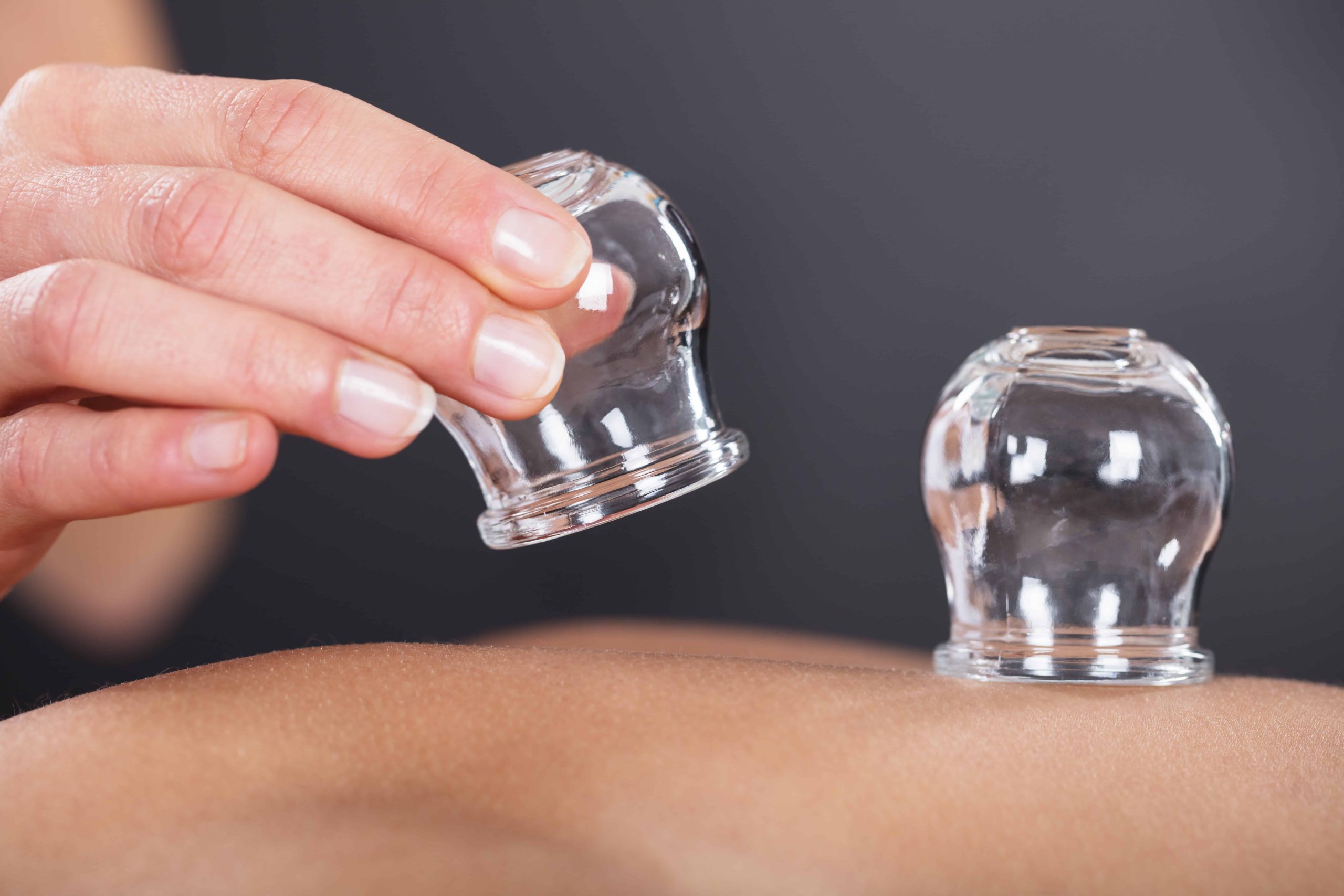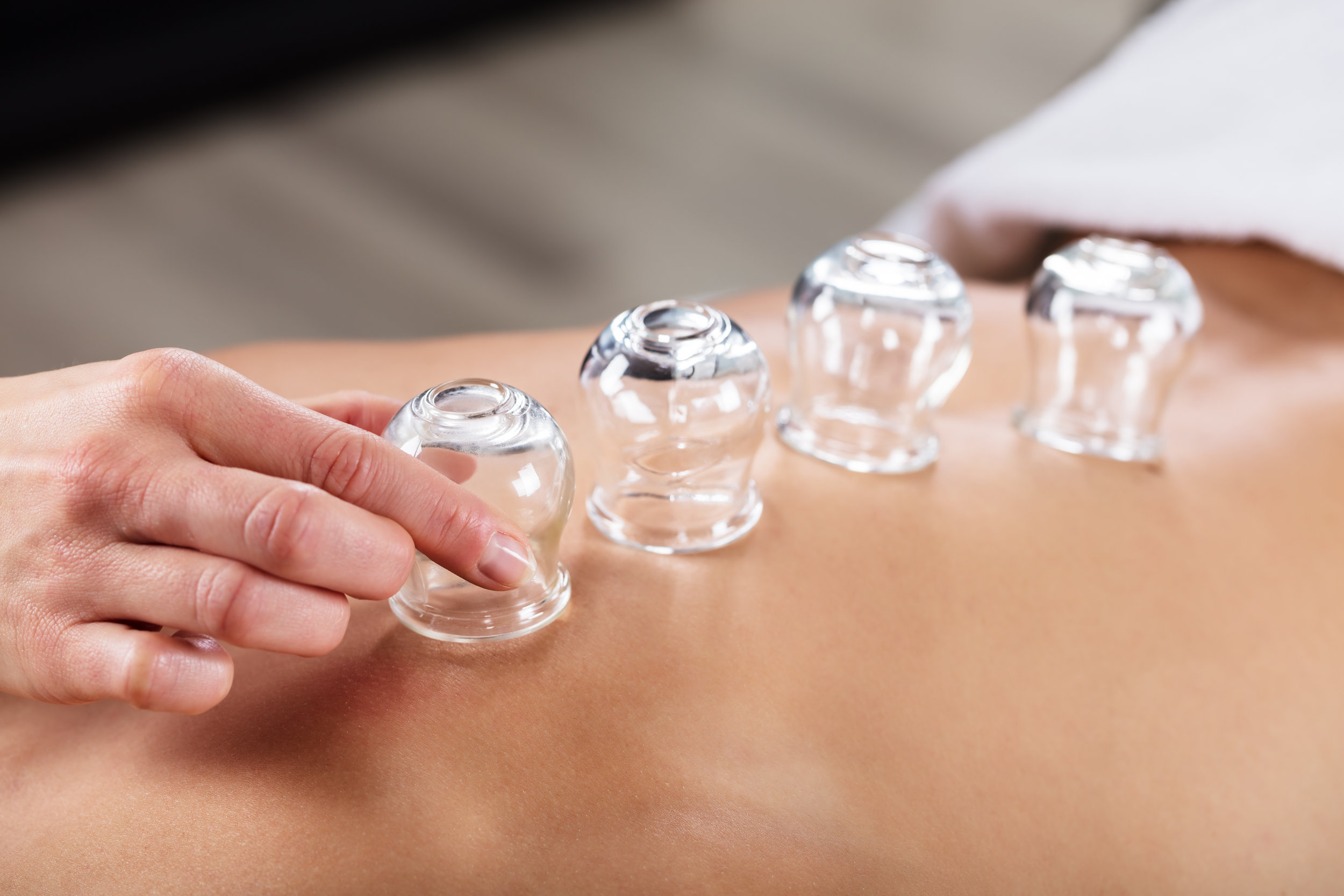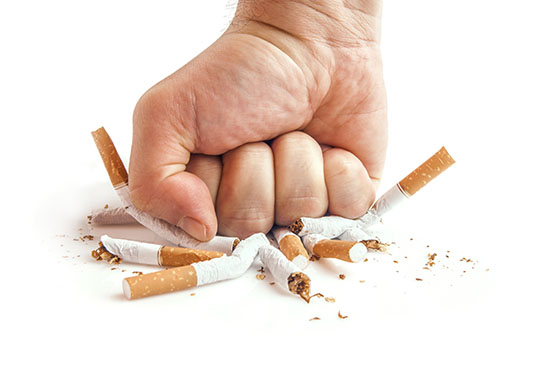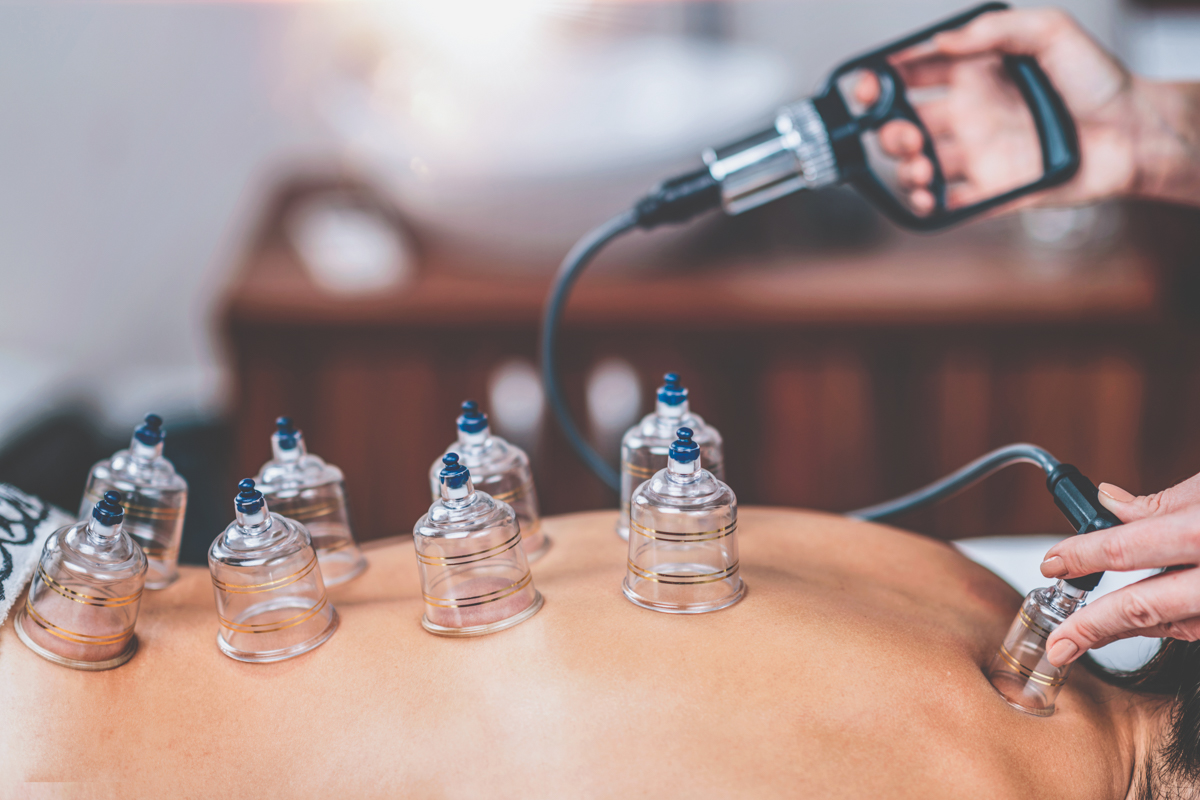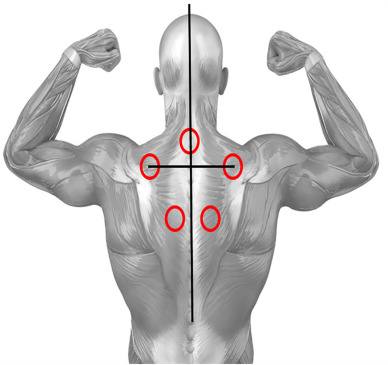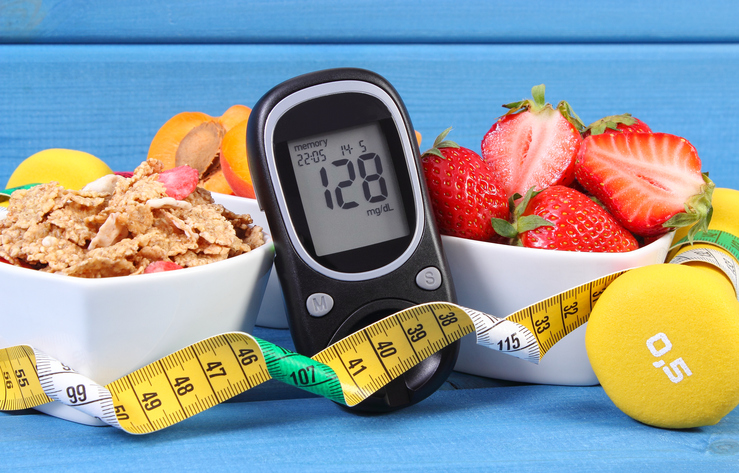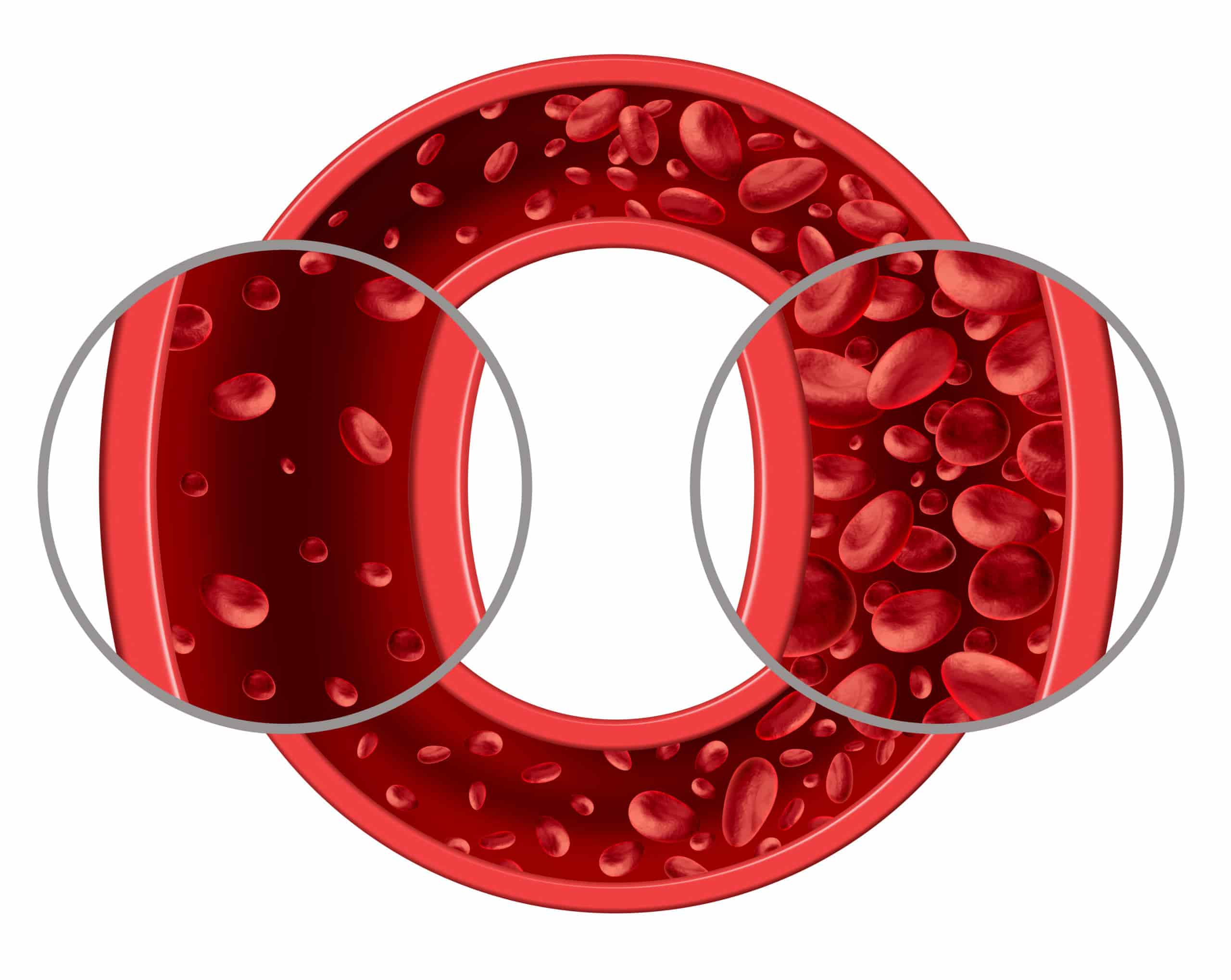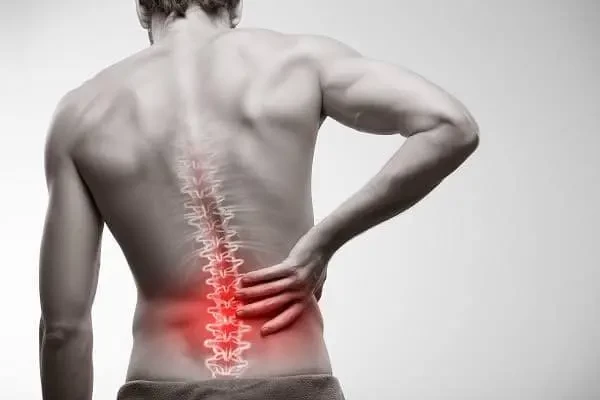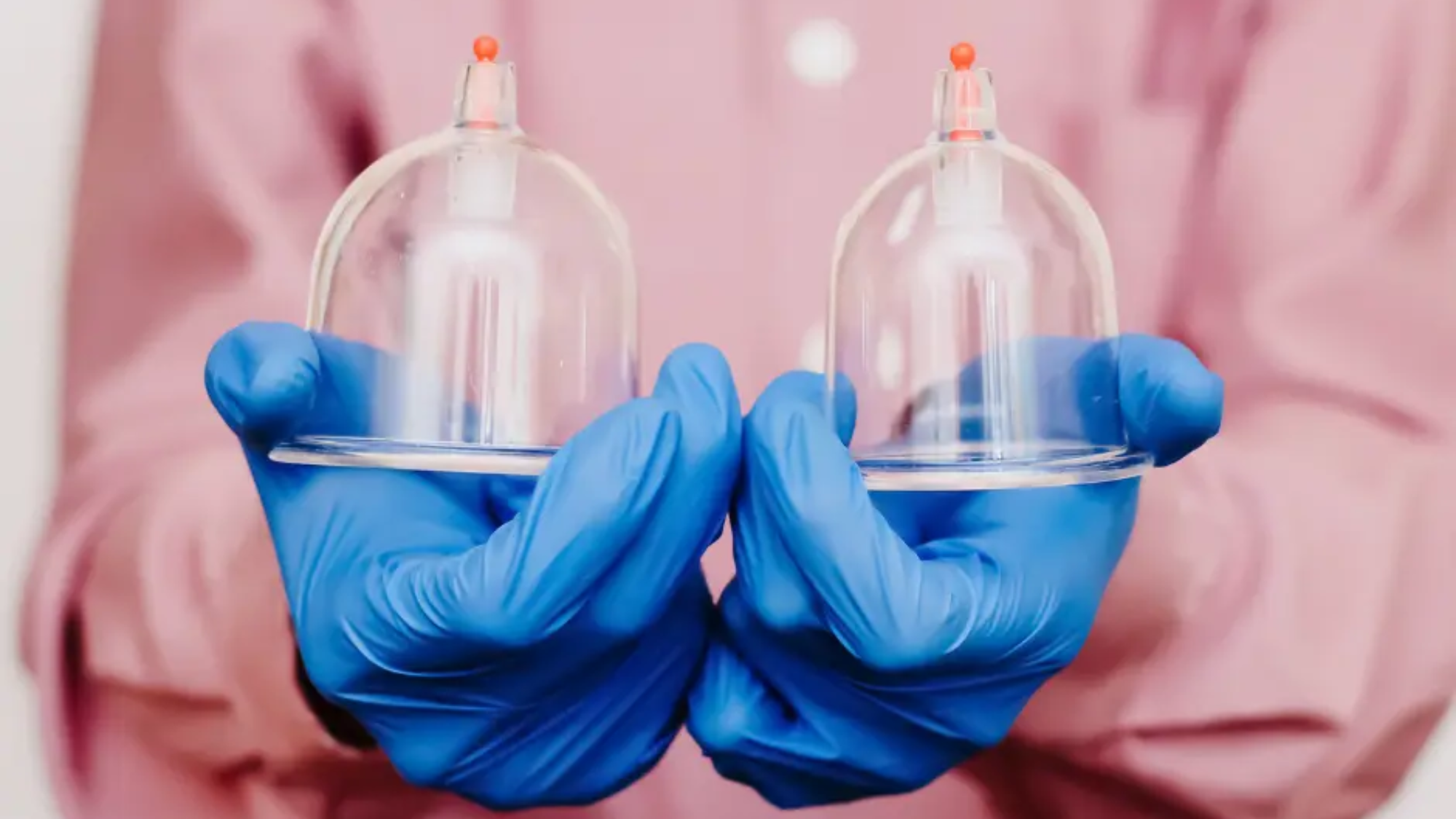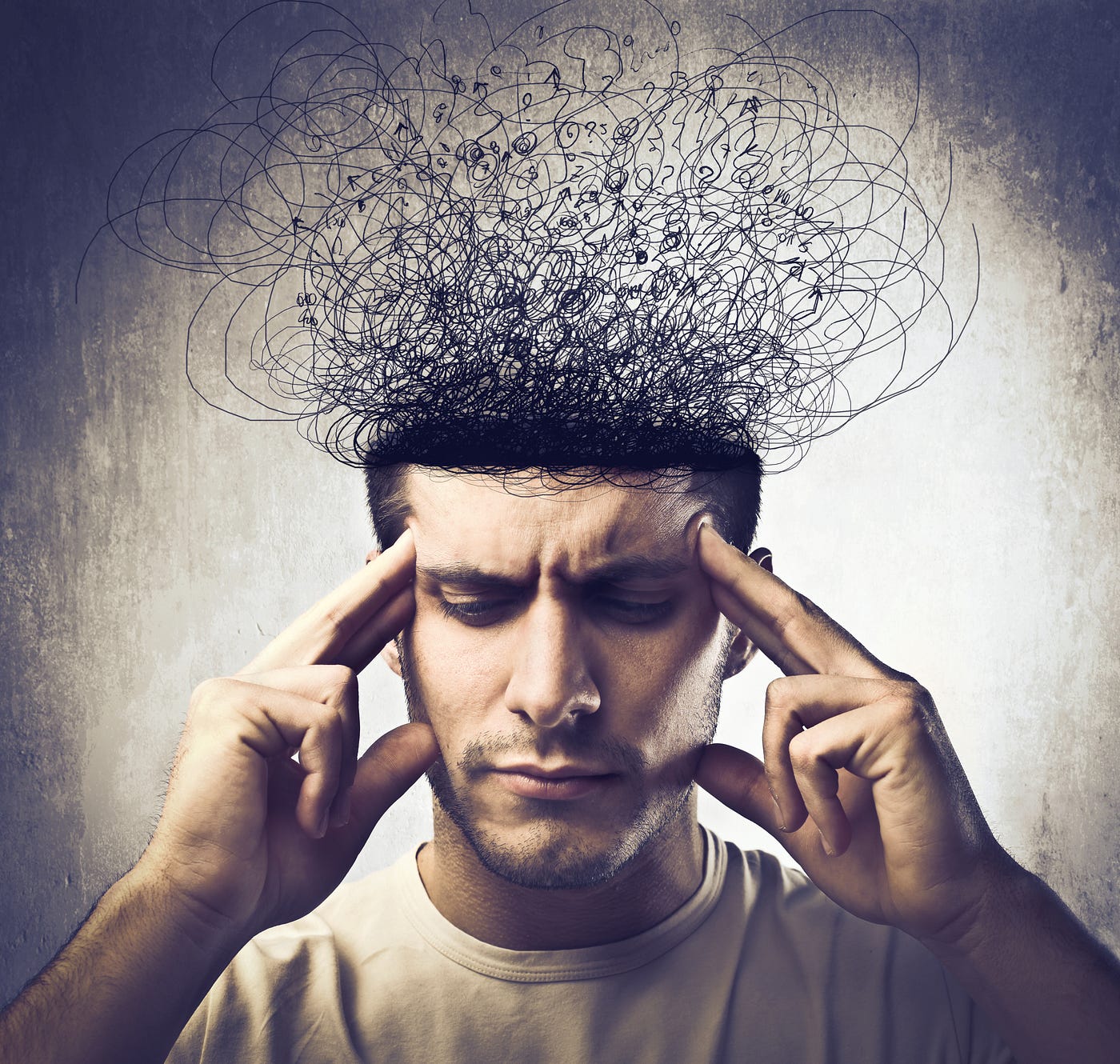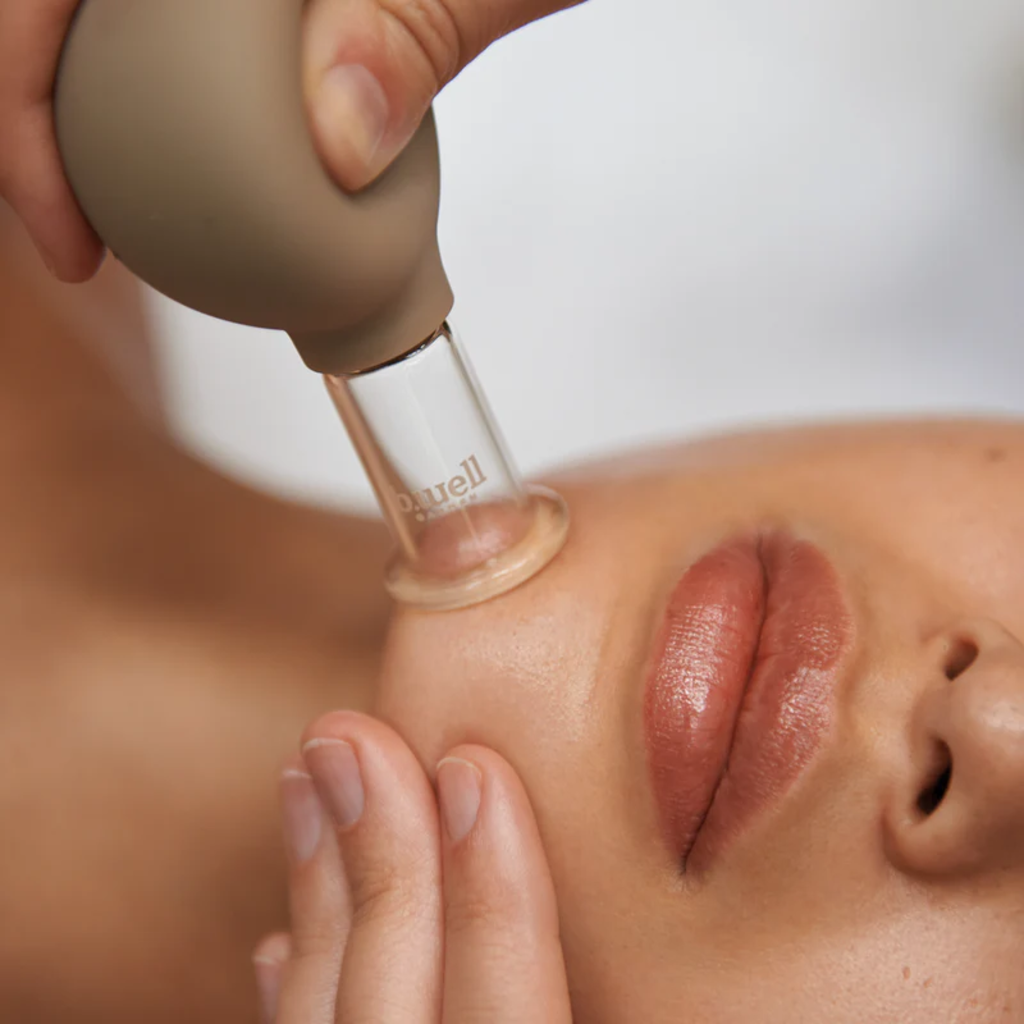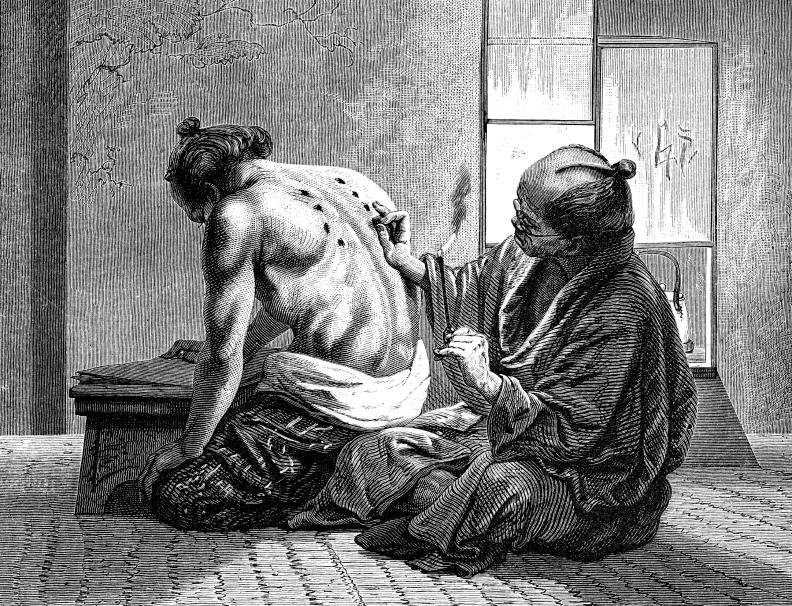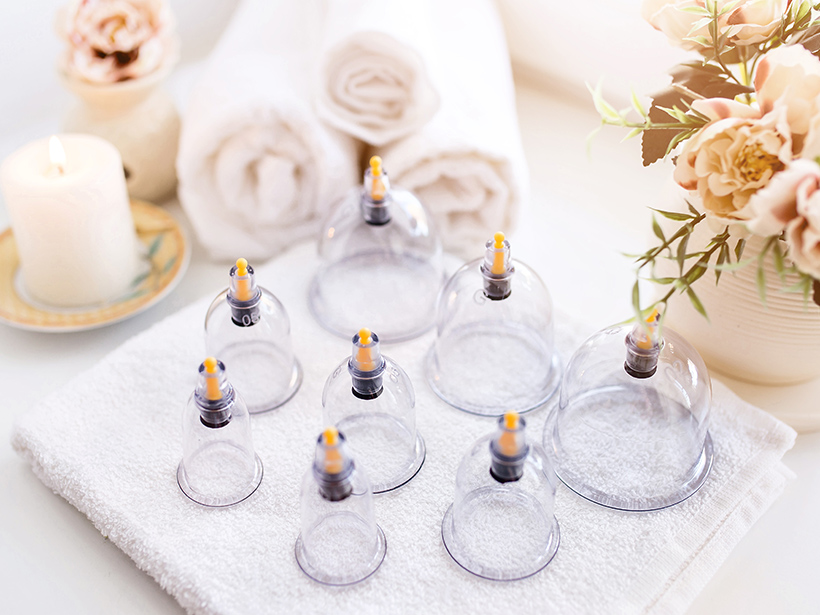Frequently Asked Questions (FAQs) – Before, During & After Your Cupping Session at Khalid Al-Zulal Cupping Centers
What are the guidelines a person should follow before undergoing a cupping session?
Important Recommendations Before Undergoing Cupping Therapy:
1- Optimal timing for preventive cupping: It is preferable to undergo preventive cupping early in the morning, as the natural cortisol hormone level is at its peak in the body during this time.
2- Personal hygiene: It is advisable to bathe and clean the body before undergoing cupping.
3-If cupping is to be done on the head, the hair must be shaved before arriving at the center.
4- Rest and relaxation: It is recommended to rest the body and avoid physical exertion or activities that involve significant changes in atmospheric pressure (such as flying or diving) on the day prior to cupping.
5- Relative fasting before cupping: It is advised to refrain from eating for no less than two hours before the cupping session. It is especially preferred to avoid hard-to-digest foods, as performing cupping on an empty stomach has great benefits for the body. This is supported by the Prophetic Hadith: “Cupping on an empty stomach is best. In it is a cure and a blessing, and it improves memory and intellect.”
6- Drinking fluids: The person who will undergo cupping should drink plenty of light fluids such as water and natural juices before and immediately after the session—especially patients suffering from low blood pressure or anemia. These patients should also inform the therapist before beginning the cupping session.
7- It is essential to stop taking all blood thinners 24 hours before the session.
8- Informing the medical practitioner about your health condition: It is essential to inform the practitioner or doctor about any illnesses the person suffers from, especially infectious diseases (such as hepatitis, AIDS, etc.), in order to take the necessary precautions to prevent the transmission of infections and to determine the appropriate cupping sites for each medical case. The precision in selecting these sites may, by God’s will, be a cause of healing.
What are the guidelines a person should follow after undergoing a cupping session?
Important Instructions After a Cupping Session:
1- Avoid exertion and atmospheric pressure changes: Refrain from any strenuous physical activity, including sexual intercourse, for 24 hours after cupping to preserve energy and vitality. It is also important to avoid exposure to significant changes in atmospheric pressure, such as air travel or diving, for 24 hours.
2- Gentle food on the stomach: It is preferable to eat easily digestible foods such as vegetables, fruits, sugars, and boiled non-fatty meals for 24 hours after cupping. This helps avoid stressing the digestive system with hard-to-digest foods like animal proteins, fats, and dairy.
3- Rest, relaxation, and avoiding stimulants: Ensure you get enough rest and avoid stress and anger after cupping to prevent high blood pressure or the return of pain due to an imbalance in the body’s energy. It is also advised to refrain from smoking (for smokers), consuming ice cream, and very cold drinks for 12 to 24 hours.
4- Gentle showering: You may shower with regular water, which is ideal. Avoid scrubbing the cupped areas that were incised to speed up healing and prevent any minor unwanted marks from appearing.
5- Covering the cupping sites: The cupped areas should be well covered and protected from cold or direct air to guard against germs and infections, just as you would with any other wound.
6- After the session, it is crucial to avoid cold exposure or direct air conditioning for 24 hours, as this can lead to severe headaches or intense muscle pain.
7- In summary After cupping, take care to rest, eat light food, avoid exertion and stimulants, shower gently, and keep the cupping areas covered.
Does undergoing a cupping session involve any risks or side effects?
About Possible Complications and Side Effects of Cupping:
Can any side effects occur after cupping?
In fact, some individuals may experience a slight increase in body temperature the day after the session. This is a normal response and is attributed to the immune system’s reaction. It usually resolves on its own within a short period.
Others may experience mild nausea or diarrhea when cupping is performed on the lower back area. This is also considered normal and results from the cleansing process triggered by the stimulation of the colon, small intestine, and stomach.
When do cupping marks disappear?
he effects of cupping (bruises or skin marks) begin to gradually fade starting from the third day after the procedure and usually disappear completely within two to three weeks. It is worth noting that the duration for these marks to disappear may vary from person to person depending on the nature and type of skin.
In summary:
Cupping may be accompanied by a slight increase in body temperature, nausea, or diarrhea in some individuals—these are normal and temporary symptoms. As for the cupping marks on the skin, they typically fade within two to three weeks, though this may vary based on skin type.
Is cupping an effective treatment for headaches and migraines?
Cupping, Headaches, and Migraines: An Effective Treatment for Migraines and Immediate Pain Relief [Recent Studies and Proven Benefits]
Do you suffer from chronic headaches or intense migraine attacks? Are you looking for an effective and natural solution to relieve this exhausting pain?
Cupping is considered one of the oldest and most effective therapeutic methods for reducing the severity of various types of headaches, especially migraines. Many people have reported noticeable improvement and immediate relief from headache pain, with migraine episodes disappearing after undergoing cupping sessions. Even more, recent scientific studies and research confirm the remarkable therapeutic benefits of cupping in treating headaches and migraines.
Benefits of Cupping in Treating Headaches and Migraines:
Cupping derives its effectiveness in treating headaches and migraines from several scientifically proven mechanisms:
– Release of pain-relieving hormones:
Cupping stimulates the body to release endorphins, which are natural painkillers produced by the brain. These hormones greatly help in reducing headache intensity and soothing migraine attacks.
– Dilation of blood vessels and improved circulation:
Cupping promotes the release of nitric oxide, a molecule that dilates blood vessels and enhances oxygen-rich blood flow to the brain. This effect helps relieve pressure on blood vessels that contribute to headaches and migraines.
– Relaxation of tense muscles:
Tension and tightness in the neck and shoulder muscles are often major causes of certain types of headaches, including tension headaches associated with migraines. Cupping helps relax these tense muscles, reduce pressure, and thereby ease headache pain.
– Blood purification and detoxification (additional information):
Some believe cupping helps purify the blood and remove certain substances that may contribute to headaches. While this aspect is still under research, the general improvement in circulation caused by cupping can have a positive effect.
– Reduction of inflammation (additional information):
Some studies suggest that cupping may have anti-inflammatory effects, which could help relieve certain types of headaches linked to inflammation.
– Calming effect on the nervous system (additional information):
Cupping may have a soothing and relaxing effect on the nervous system, helping reduce stress and anxiety—common triggers for migraines and headaches.
Is cupping beneficial and safe for diabetic patients? What precautions and areas are appropriate?
Cupping is considered highly beneficial for individuals with diabetes, provided that their blood sugar levels are well-controlled. There is no fundamental contraindication to performing cupping for diabetic patients, especially when specific protocols are followed by the cupping specialist to ensure the safety and effectiveness of the treatment.
Key precautions and recommended cupping sites for diabetic patients:
– Blood sugar control:
It is essential to ensure that blood sugar levels are stable and regulated before performing cupping therapy.
– Minimizing incisions and depth:
The cupping specialist will reduce the number and depth of incisions to avoid potential complications related to wound healing.
– Avoiding the feet:
Cupping should never be performed on the feet of diabetic patients due to the sensitivity of the area and the higher risk of delayed wound healing.
– Strict hygiene:
Proper sterilization of the area before and after cupping is critical to prevent any infections.
In summary:
Diabetic patients can safely benefit from cupping therapy if their blood sugar is well-controlled and specific precautions are followed by the practitioner. The feet should be avoided, and hygiene must be strictly maintained.
What are the specific areas of the body where cupping is performed?
In preventive cupping or Sunnah cupping, the main areas include the traditional prophetic points such as the Kahil (upper back between the shoulders), Akhda’in (both sides of the neck), and Yafookh (top of the head). For therapeutic or revitalizing sessions, the appropriate points are selected based on the physician’s assessment and the specific needs of the individual case.
Is cupping allowed for women?
Yes, women can undergo cupping therapy at any age after puberty without any medical restrictions — whether before or after menopause.
There is no medical reason preventing women from cupping. The common belief that menstruation substitutes for cupping is incorrect. It is only recommended to avoid cupping during the menstrual period as a precaution. Ideally, cupping should be done three days before or after the end of the cycle.
Prophetic tradition also supports this: Umm Salama (may Allah be pleased with her) asked the Prophet Muhammad ﷺ for permission to undergo cupping, and he granted it. She was around forty years old at the time, which refutes the claim that cupping is only for women in menopause. Aisha (may Allah be pleased with her) is also reported to have undergone cupping.
From a medical standpoint, there are no restrictions on women receiving cupping therapy after reaching puberty.
In summary:
Yes, cupping is permissible and beneficial for women of all ages after puberty, with attention to its timing in relation to the menstrual cycle as a precaution.
How long does a cupping session usually take—from consultation and sterilization to completion?
The duration of a cupping session can vary significantly between individuals and cases, depending primarily on the type of cupping performed. So, how long does a cupping session actually take?
Preventive (Sunnah) cupping usually takes 20 to 30 minutes.
Therapeutic cupping can take 30 to 45 minutes, depending on the condition being treated.
Cosmetic or massage cupping sessions typically last around 30 minutes.
It’s also worth noting that booking an appointment in advance helps avoid unexpected waiting times.
What are the best times to perform cupping?
The preferred times for cupping vary based on the type of cupping:
– Preventive cupping: It is recommended to perform this during the lunar nights, as there is a belief that the moon influences blood circulation and body deposits. This period starts from the 13th day and ends on the 23rd day of every lunar month. Odd-numbered days within this period are considered the best for preventive cupping.
– Therapeutic cupping: If the purpose of cupping is to treat a specific condition such as fatigue, headaches, muscle pain, or any other health issue, it can be done at any time the person feels physically comfortable. The most important factor in this case is choosing a time when the body is in its best state to undergo treatment.
Is it true that the first experience with cupping often encourages a person to repeat it?
It’s not about getting used to it, but rather the wonderful feeling you’ll experience after cupping that will make you crave this amazing experience again. Cupping gives you a boost of energy and happiness, relieves mental stress, and helps address your underlying issue.
Are there specific days when cupping is prohibited?
Many scholars and specialists believe that the general rule for cupping is that it is permissible at any time when needed, based on numerous authentic hadiths that encourage it when blood is in excess. As for the reports that prohibit cupping on certain days, they are considered few and weak in terms of their chain of narration compared to those hadiths.
Does a person feel pain during the cupping and incision process?
The wet cupping process involves superficial incisions that may cause a slight feeling of pain. However, this pain is usually tolerable and not very intense, and it is necessary to achieve the therapeutic benefits intended from wet cupping.
